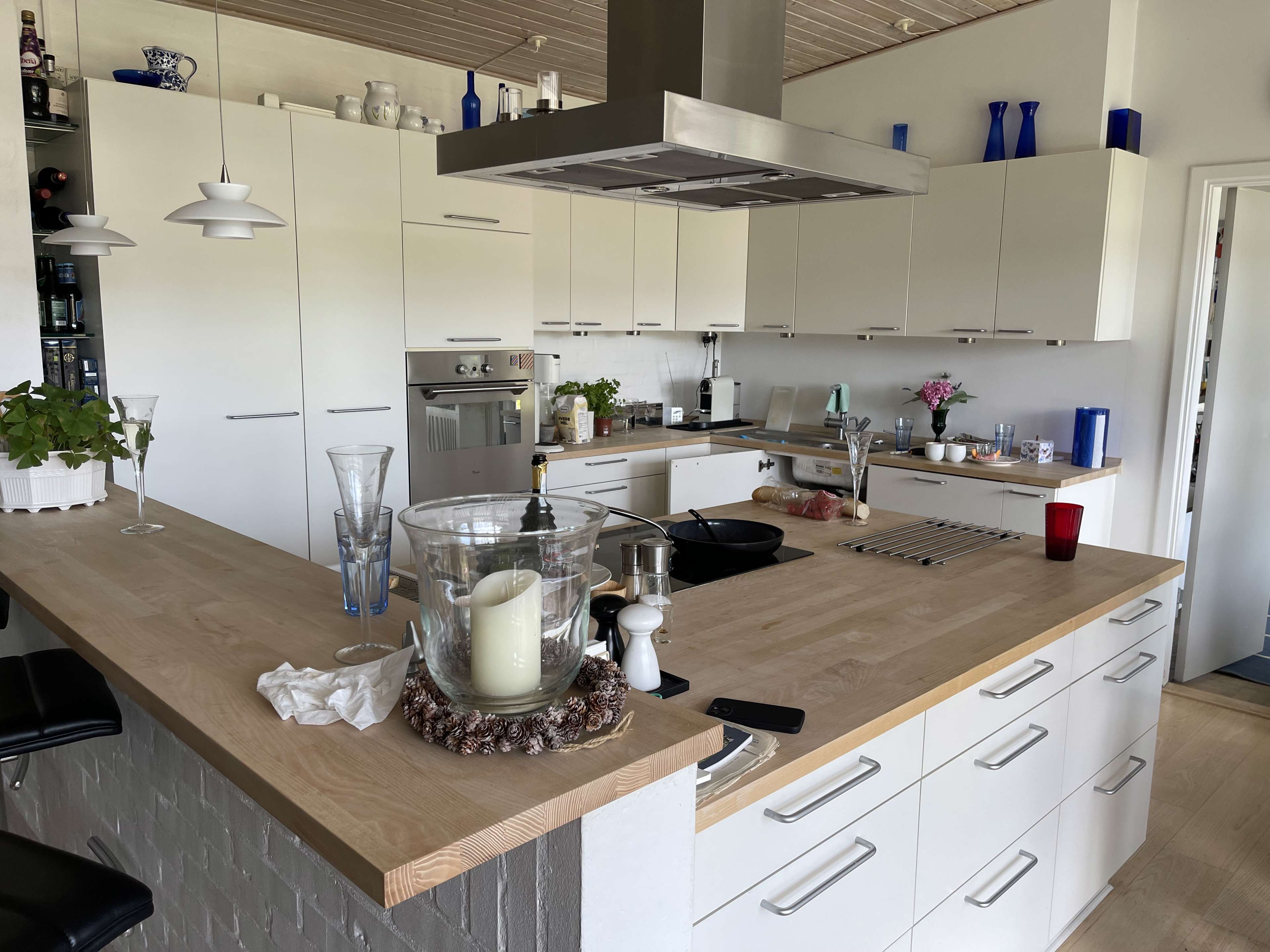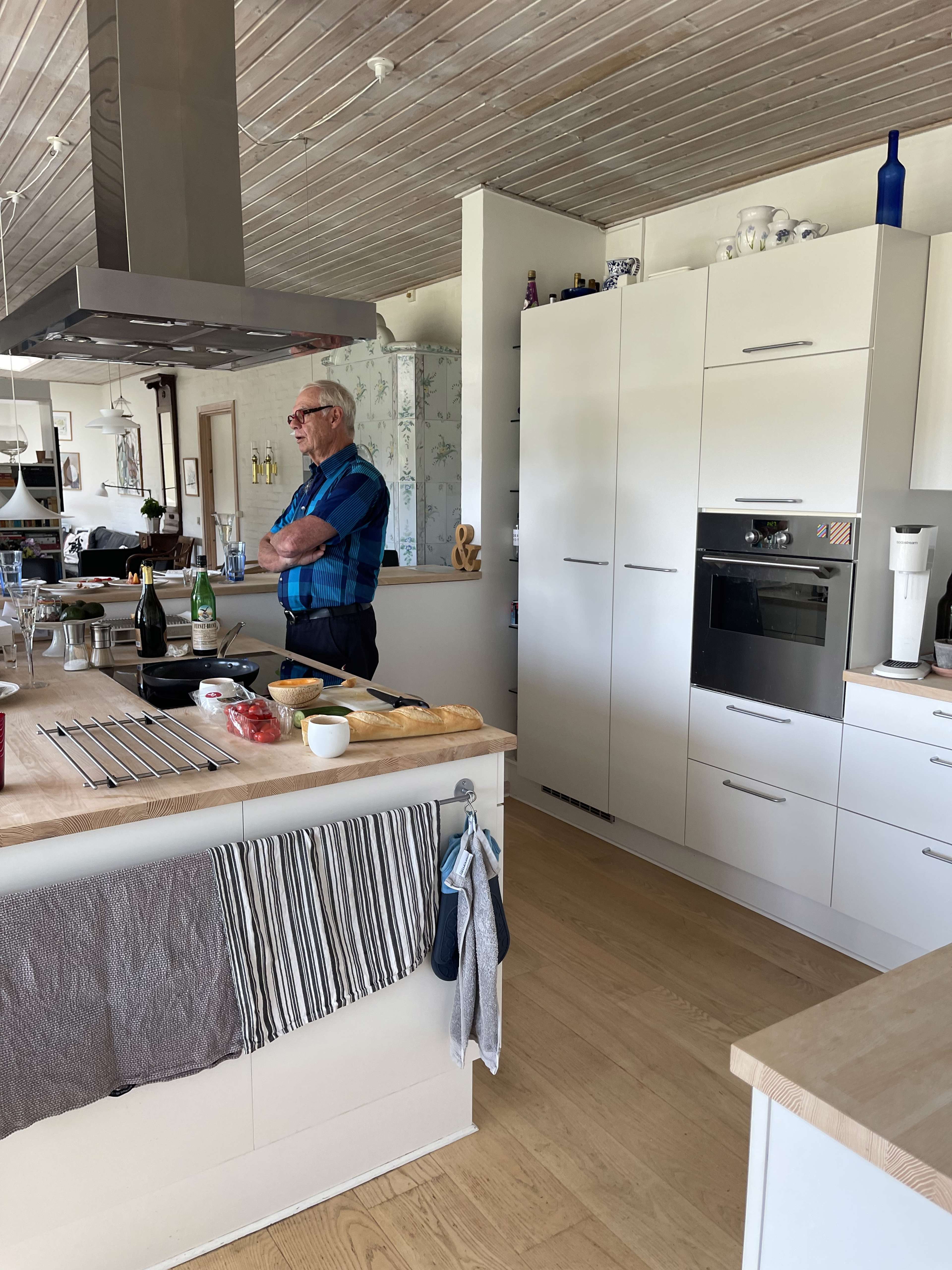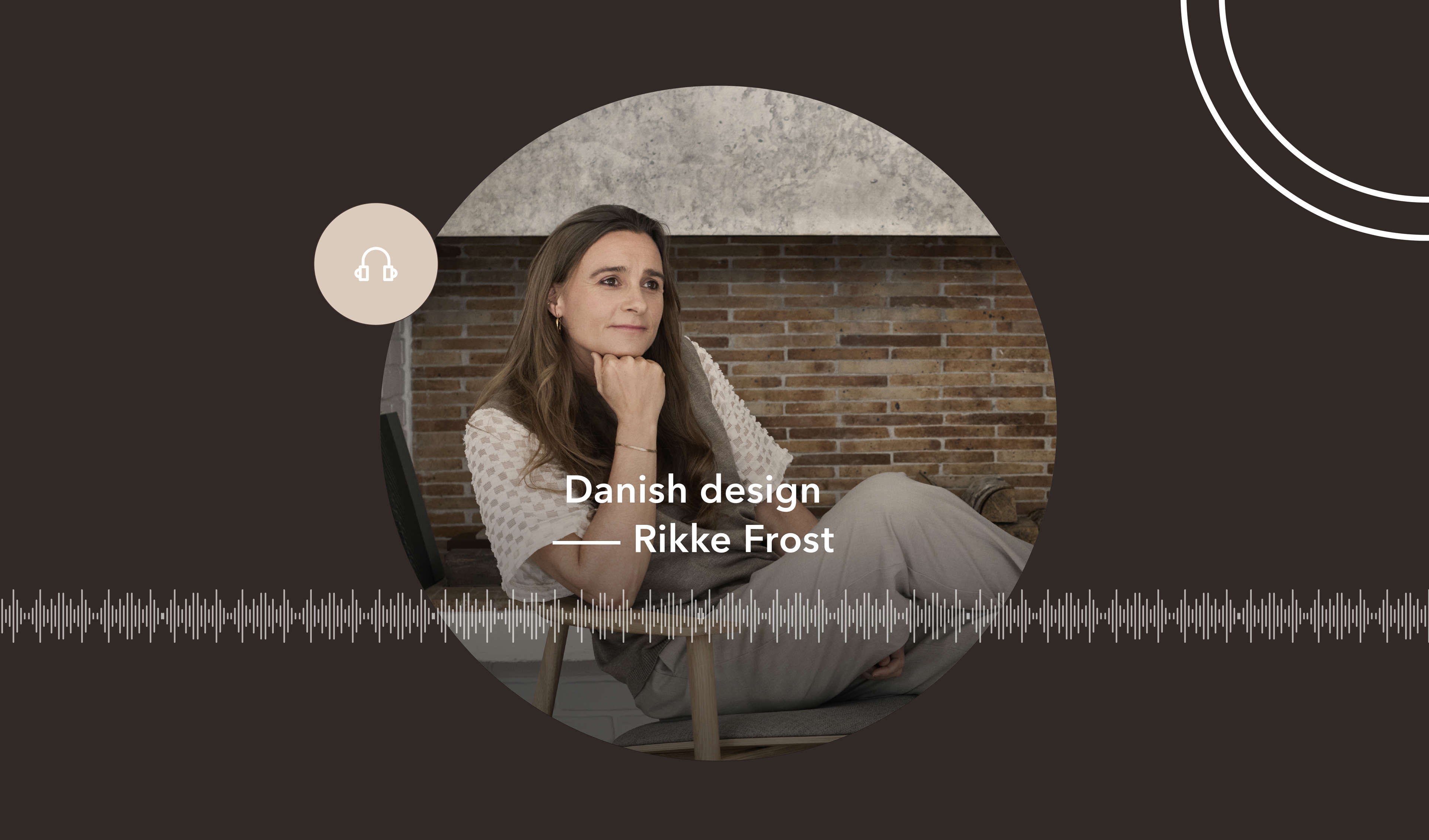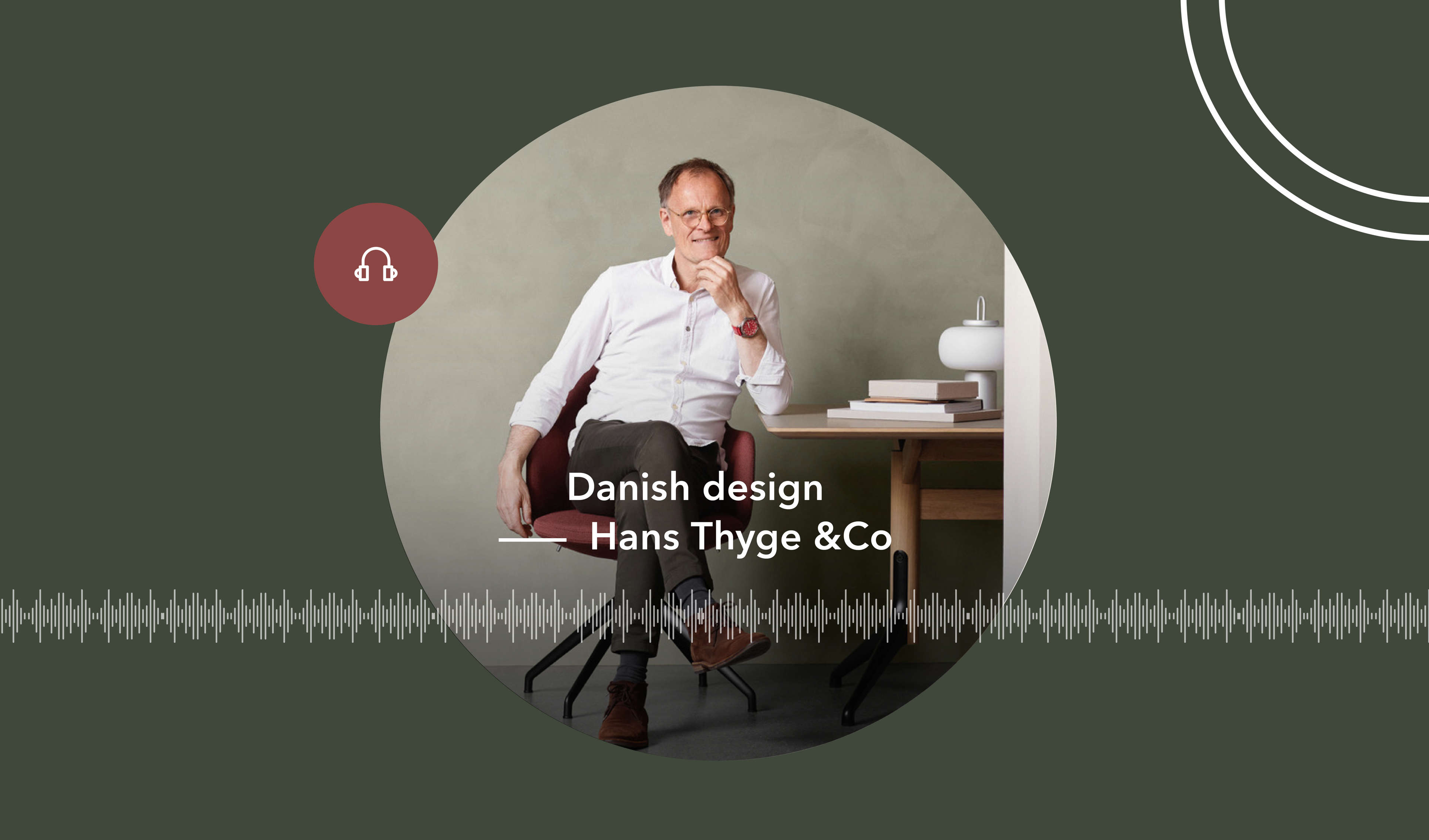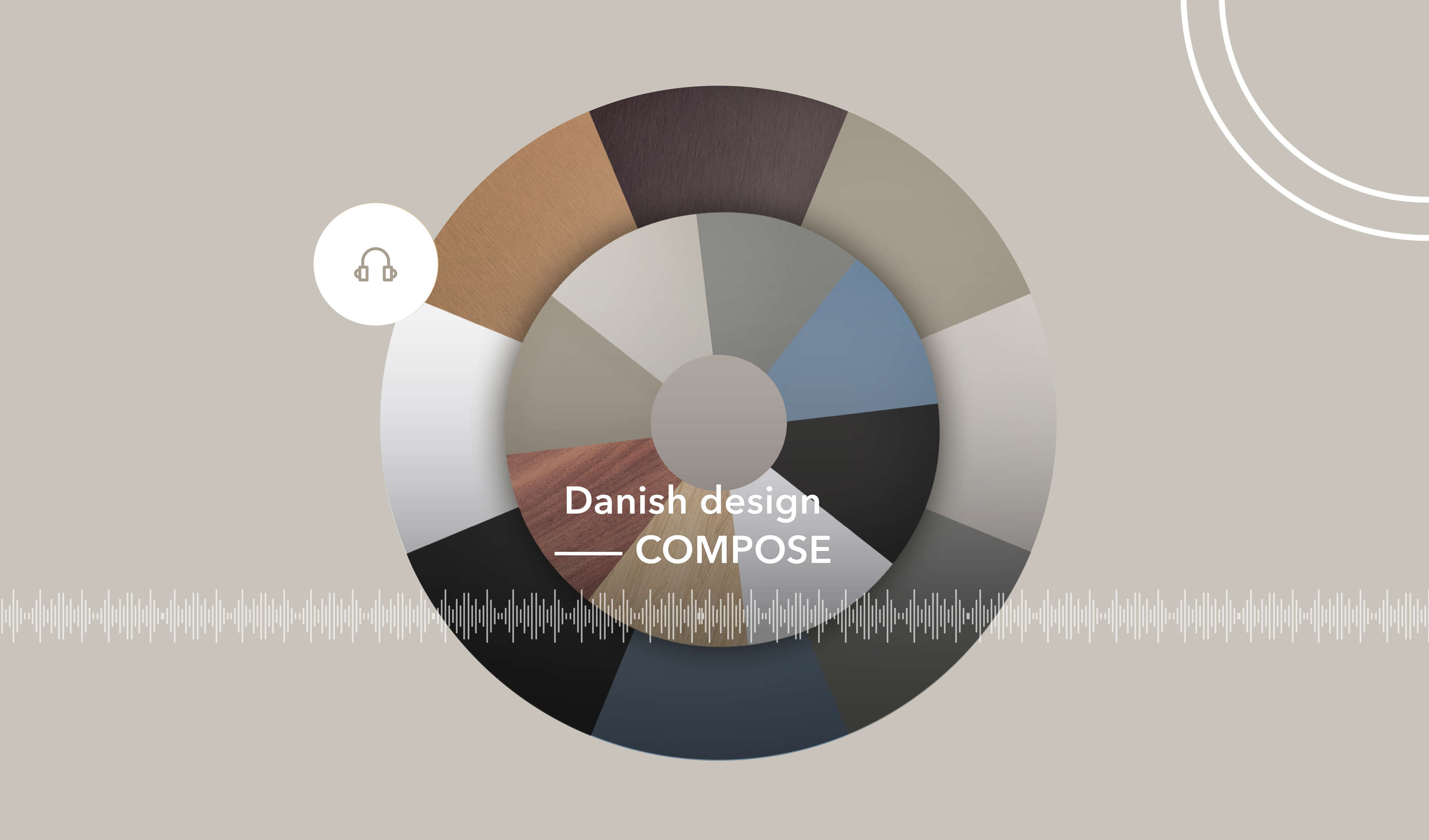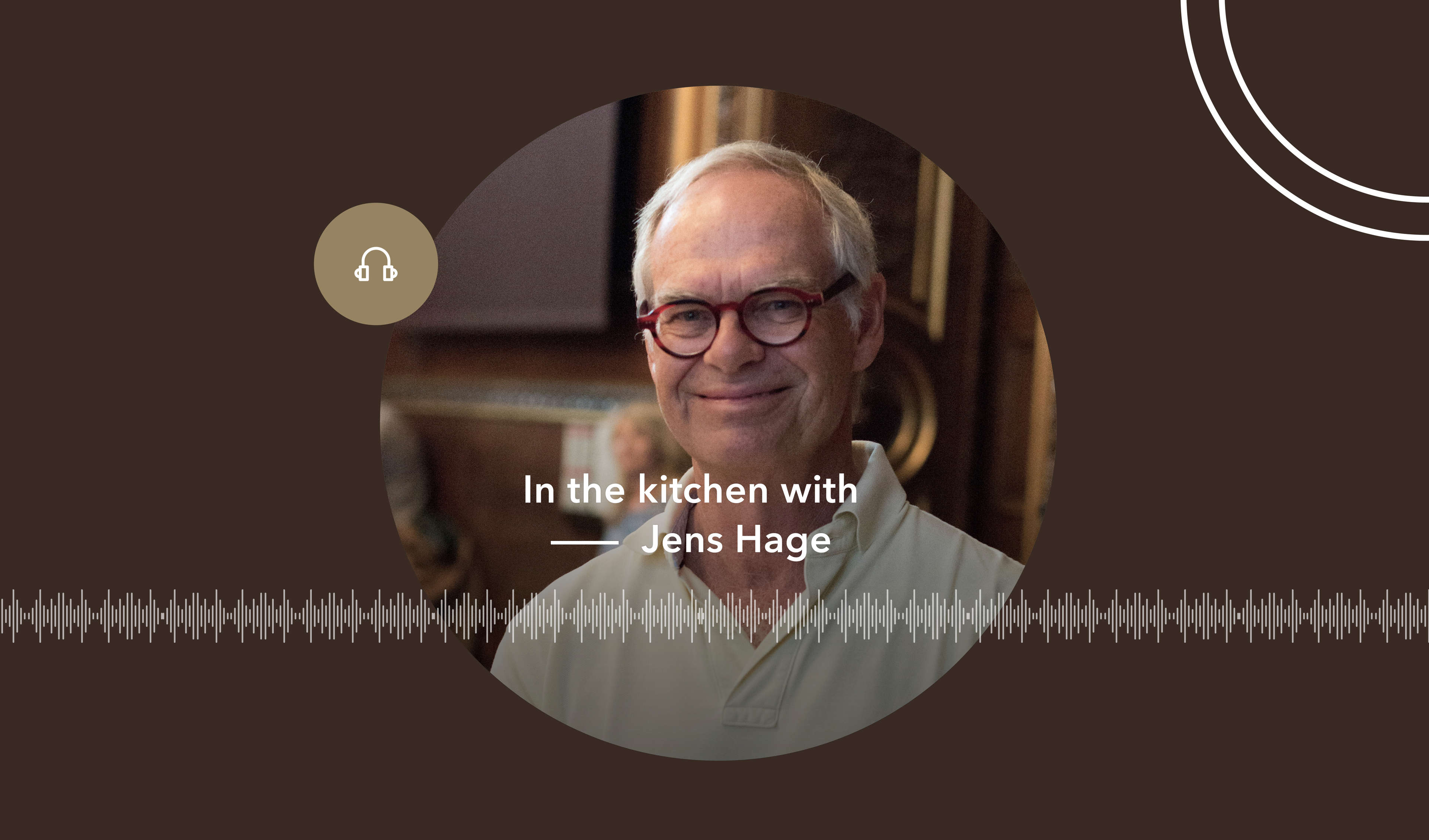
In the kitchen with Jens Hage
Welcome to The Sociable Kitchen®, a podcast by Kvik. I'm Julie Broberg. It's been a while since we dropped an episode and we are hard at work on new episodes on Danish design, but we thought we needed a little palate cleanser.
So this episode is going to be a bit different. It's kind of a bonus episode that doesn't necessarily fit with our others on Danish design or telling the stories of some of our Kvik franchisees. Today we bring you a conversation with a true Danish national treasure, editorial cartoonist Jens Hage. Jens is 76 years old, and he's been creating satirical editorial cartoons for Danish newspaper Berlingske for more than 40 years.
Jens and I go way back. We first worked together at some workshops back in 2005. Oh, wow, that was 20 years ago. Time totally flies. Back then he used his magical drawing ability to help us visualise and understand the things we were working on. And we've been on quite a few adventures together from India to the Philippines to Legoland, so we know each other very well.
I took my sound recordist, Telma, and a bag of strange groceries that I thought would sound good on microphone, and made the journey to Jens’ home north of Copenhagen to talk about kitchens with my old friend. Like in many homes today, the kitchen is the centre of Jens' home, both physically and metaphorically.
Note: this page is a transcript of the episode.
Setting the scene
Julie: To set the scene, I asked Jens to describe his kitchen
Jens: It is white and light, and it's made with this, uh, uh, this stove in the middle at the great table. This is sort of the center of the kitchen. It's
Julie: Kind of an island, but it's actually kind of a peninsula because it's built onto the wall.
Jens: You're quite right because of this wall, this low wall with a, with a table plate on it so that you can sit and watch what's going on. And you have three bar stools up to it and we can actually use the bar stools around the the table as well, because they can go up and down. It's very good for grandchildren and I love this.
They can’t put it down with their own weight, so it's great fun. And then there’s this, island in the middle. When we come here, when we come home from own when we've been buying things, we land here. This is sort of the landing place and space, and we put everything around here, bags and things.
Julie: So when you come in, you mean like with your groceries or…
Jens: Yeah. So we end up here putting things on the table.
Julie: The kitchen is in the centre of Jens home. It's huge, but it's quite open to the adjacent dining area, separated only by a tall breakfast bar with three stools up to it. The kitchen island, which is actually more of a peninsula since it's attached to the breakfast bar, looks out through full length windows onto a sunny terrace and a beautiful backyard where there's an idyllic small lake and a pasture where cows graze peacefully. As you said, it's in the centre of the house.
The centre of the home
Jens: That's right. And we have the refrigerator here. And, uh, what is, what is that kind of cupboard called?
Julie: Yeah. Um, what do you call them? Yeah. What would I call it? It's a pullout cupboard where you have all kinds storage.
Jens: And we have the oven here and the micro oven on top of that. And all our oils and things up here. Uh, coffee machine in the corner. The smallest coffee machine you can get.
Julie: Because the kitchen is in the heart of the home, it's where most everything happens. It's almost as if cooking is the least important thing that happens in the kitchen.
Though we did start preparing some of the strange but sonically interesting food I brought as we talked. So don't be surprised if you hear us chopping veggies or the sizzle of bacon in the background.
Jens: Sometimes we are sitting here in the kitchen just talking without doing anything with food. Sitting in the kitchen, because it's nice to be here. And when the kids come, they sit at the chairs there.
And the grandchildren run around and so on. So this is sort of a meeting point, and we could go outside as well when the weather is good.
Julie: It is. It is like the centre of the home. Do you eat breakfast here?
Jens: Yes. Yes. In the wintertime. I'm sitting there having my breakfast. Funny enough, we eat at different hours. First Barbara has breakfast and she makes it herself. And, uh, when she's around finished, I sometimes take over her plate and make my own and use the same plate. But in the summertime, like now, we are sitting outside together with a coffee and the paper. And, uh, just looking at the, the view, there's everything, something happening down there now. The bulls are going there.We have two bull calves.
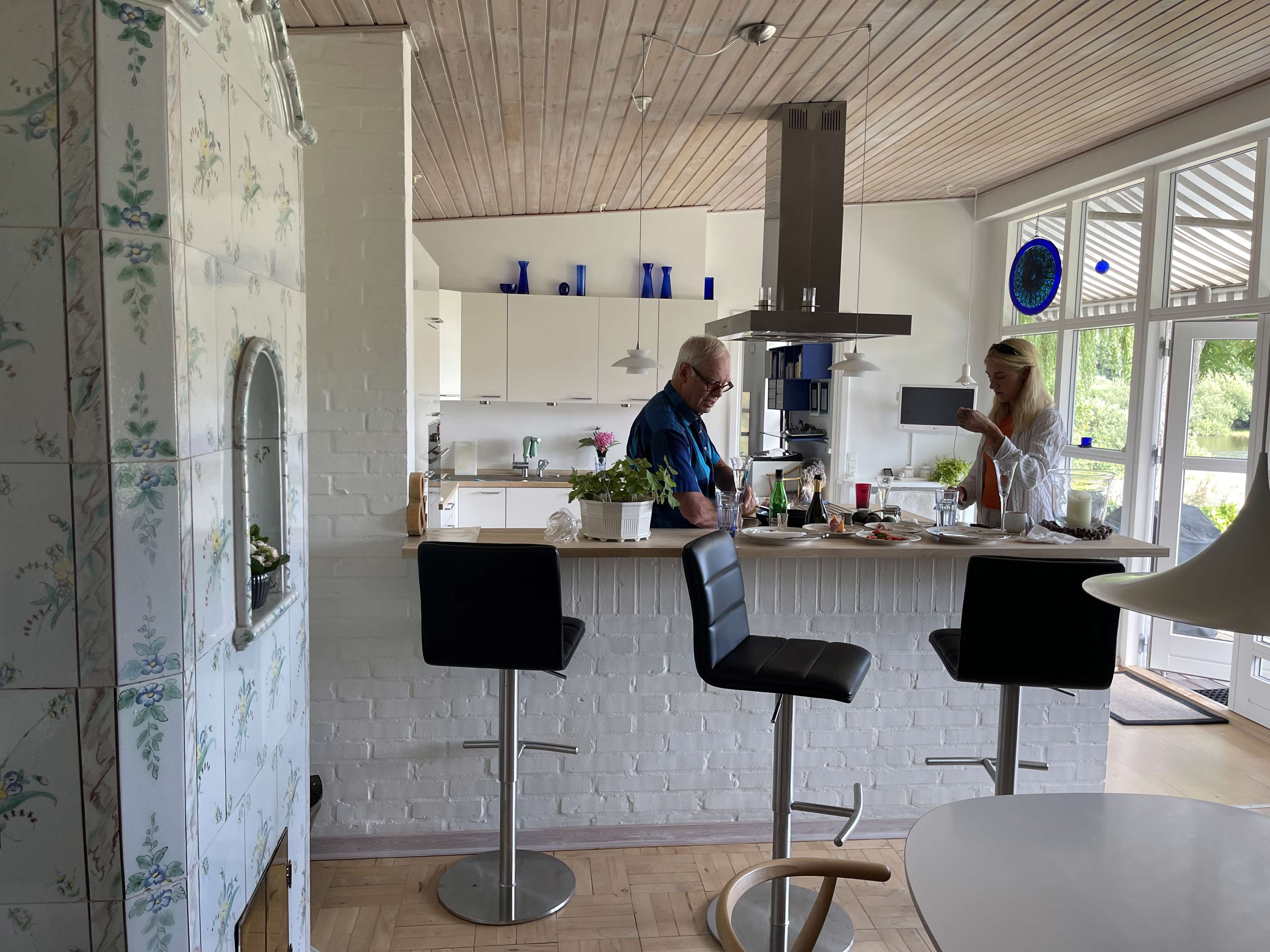
Jens grew up in this house
Julie: So this does tend to be where you hang out?
Jens: Yeah. Yeah. It's the middle of the house. You can pass by, you can make a little stop and you can go into the garden. So it's actually very well placed in the house. Snd it's light. It's nice to be here.
Julie: And the view is great.
Jens: Yeah. And I remember when we had it done this table, my wife thought, no, no, no. It's much too big. And, and the guy who was going to build the kitchen said, “Too big? I never heard the table in the kitchen being too big.” And he was right.
Julie: It isn't, it hasn't proven to be. But what was the layout before? Did you have an island like this?
Jens: Hmm, what did we have? Actually, no, it was quite different. Yeah. The wall was there, but it was somewhere else.
Julie: Was the kitchen closed off from the rest of the house? Was it a full wall?Have you, have you taken out part of the wall?
Jens: No, no, there's always been a hole here. In the old days when I was a child — I lived here as a child as well. Ah, okay. There was this half wall, it was made of wood, and it was sort of just a dividing thing in the room. No doors. You could just walk around it if you want to.
Julie: I don't think I knew it was your childhood home. So you grew up here too?
Jens: my parents and I came here when I was seven years of age in 1955. I was seven years of age at that time and uh, my father built the house. He was an architect. And in, 1982, Barbara and I moved in and took it over after them, and we've been here since and we are never going to leave.
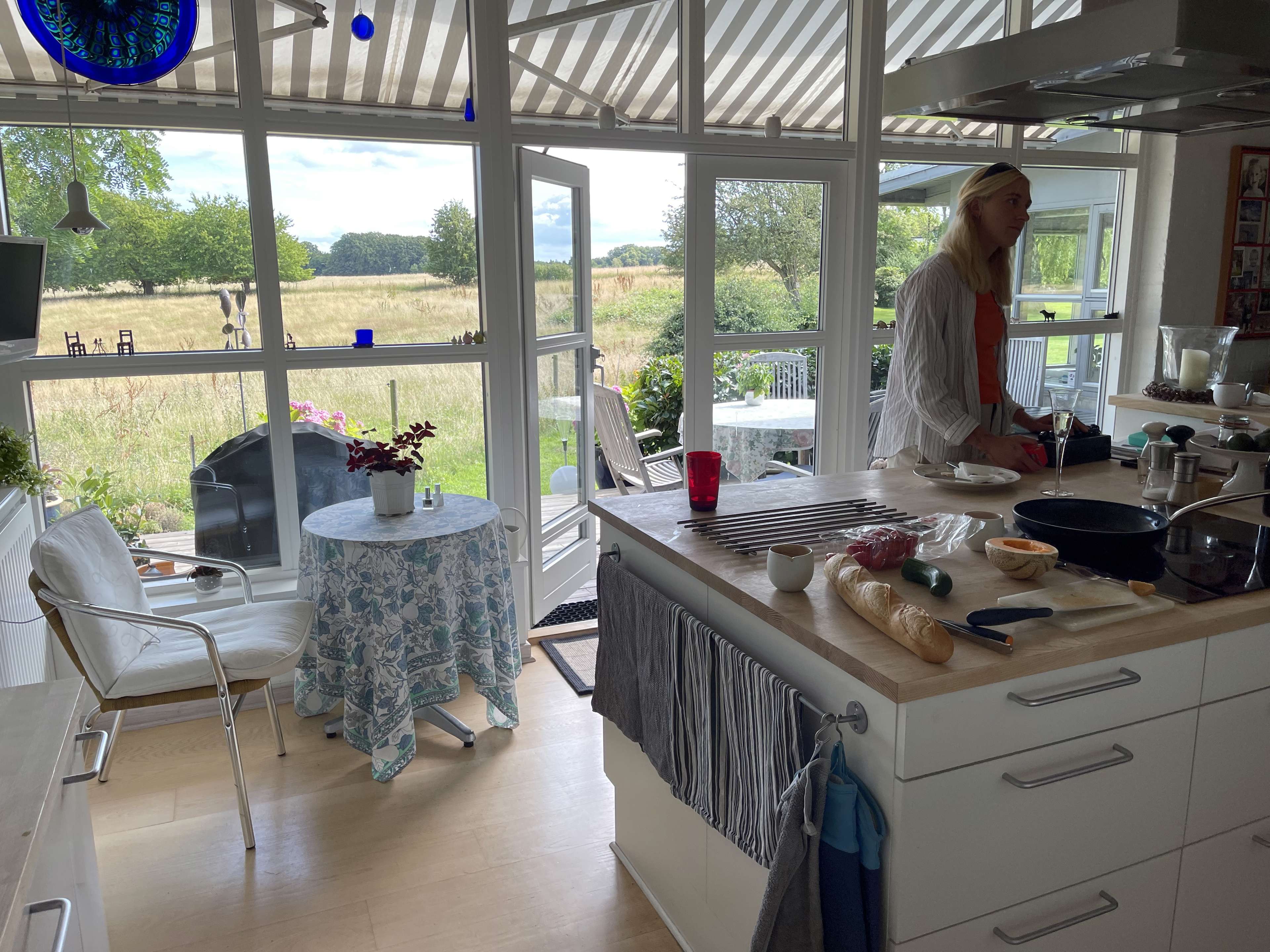
From Stone Age fireplace to modern kitchen
Julie: At this point Jens and I used that tiny coffee machine to make a cup of coffee and then continue our conversation over in the sunroom. Even though we moved out of the kitchen, it continued to be the topic of our conversation.
Jens: That's funny because it reminds me of the Stone Age. I never was there. No, but, but I learned that, that the whole thing in a family or in a tribe, in the stone ages was around the fireplace. People were gathering around the warmth, also inside of the huts or whatever it was. Kids and grownups were there. The, the hunting was finished and they maybe prepared some meat over the fire and the the smoke came up and went out of the hole in the roof and the whole thing happened around the fireplace. I think the modern kitchen is a modern fireplace where everything takes place.
Julie: Yeah. It kind of is.
Jens: There's a connection there somewhere.
Julie: And it maybe speaks to something in us as humans this need for gathering. And the need for being there together.
Jens: That's right. Somehow. Yeah. And not being out working or traveling or hunting or whatever you're doing when you're sitting together. Around the fire. You're never cheating. You're having fun. Somebody's playing some instrument and maybe they're singing, they're eating, and so the, the small kids fall asleep and the whole thing is going on. It's all okay. It's the family. It's worth being there.
Julie: Yeah, you're present in it.
Jens: Yeah. You are really present. And it's cold on your back maybe. Yeah. There's something to that.
Julie: Yeah, that's true. Yeah. I hadn't, I hadn't thought about it that way. I think we've done a lot of thinking about like the, the different phases the kitchen has had. I've been, I've been thinking about that 'cause I've been actually thinking about another podcast series where we talk about the history of the kitchen.
But I didn't think back that far. I didn't think Back to the stone ages, no.
Jens: No, neither did I before now.
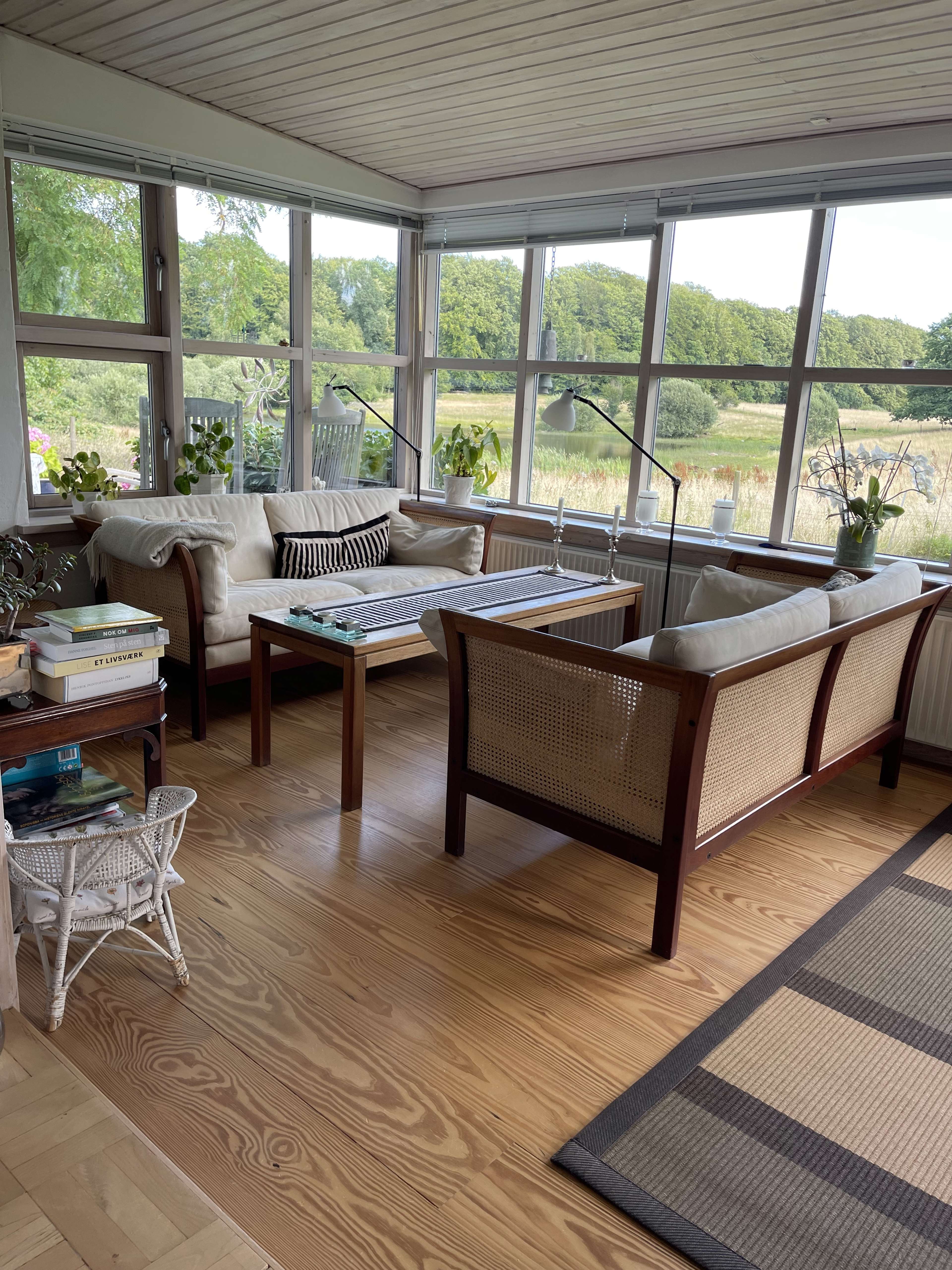
Jens: But the kitchen I grew up with many years ago, that was a woman's place. And it was small.
Julie: And it was a separate room.
Jens: It was a separate room closed off and there was a long hallway to the dining room. They had to carry things back and forth and so on. And the kitchen was far away and maybe the housewife was there. Maybe a lady who or a servant of some kind. Mu father was an architect and the first kitchen in this house, I remember the way he designed the cupboards because my mother was standing there at the table and it should be this height. Higher than normal because he was measuring her arms and so on and said, this is the height that the table should be for you
Julie: So he made it for your mother?
Jens: For, for my own mother, yeah. And when she was reaching up to the cupboards, he could see that the lowest cupboards were to be that distance from her arms, but the highest one were going to come further out because otherwise she couldn't reach it. So the cupboards were seen from the side like this, and then the, the upper cupboards were going like…
Julie: They actually tilted forward.
Jens: They tilted forward so that she could reach for the shelves up there.
Julie: Wow. That is really thinking it through. Like he was designing a new kitchen.
Jens: …using her measurements. And she was happy. This was a very good kitchen, but none of this modern way of gathering around a table or a stove or a sink or anything. There was one table at that side and another table at the other side. But there was this, uh, sort of a part wall between the kitchen and the dining room, which was just on the other side. And there were these doors you can draw aside, and then you could put things from…
Julie: you could put the food through to the dining room.
Jens: To the dining room, yes. And you're going draw them, what, what is that called? A way to push them back and forth. So then when guests came, it looked sort of closed and, uh, you, you could always see the, these, uh, just the doors. Just the doors. And you can sit down. You couldn't see the kitchen actually.
But my mother went out and just around the corner, and she would put something in there. She would put it in and you would, and then you could grab it on the other side. That was very modern at that time. That was in the fifties. Yeah. Yes, and I think it was one of the first kitchens that actually worked with a housewife and the guests and so on. We can talk together also.
The confessional chair
Jens: And she also had a blue chair with steps on it because some of the top shelves, she couldn't reach them. So she had this chair with a little, uh, staircase you can draw out under the seat so that she could go up and reach. And it was built in to the chair. And this chair was placed in the kitchen and when her friends came to visit during the daytime, they were sitting on that blue chair and she was in the kitchen. And, every sort of deep conversation took place in the kitchen.
And they called this chair. Um, and what is that in, in English — skriftestol
Julie: Like a writing chair?
Jens: No, no, more like in the Catholic church, where you go to talk to priest.
Julie: Ahh, the confessional.
Jens: The confessional. Confessional. Yes. That's, that's what it was. Her female friends came there and they told her everything about their marriage and their, their children and so on. It was the, so it was a confessional chair.
She was a very brainy girl. Not girl, but woman, my mother. And sort of a psychologist as well. So people came to her from far near and told the whole story to her from that chair, the blue chair in the kitchen.
Julie: Do you have the chair?
Jens: It’s at my sister's at Nivågård.
Julie: Is it? Right. Okay.
Jens : And now it's white, painted white. Oh, they recovered it. Okay. But it still exists and we use it as a metaphor in our speeches. When my mother was alive we made, birthday speeches and so on, right? And this chair came in many times as a metaphor for what her previous life was like.
Julie: A very, very important chair. Had your father designed it? Did he design furniture?
Jens : He just bought it actually.
Julie: Okay.
Jens : It was this very simple chair, with a simple seat and a simple sort of back. And then there were these two steps, things you can draw underneath that you could pull out and use it as a chair and as a little step stool.
Julie: Okay. Oh wow. Okay. I wonder if that had some smart designer behind it. I don't know that I've ever come across one.
Jens : It was very useful also because it was so humble. It didn't look like anything. You couldn't sort of relax in like that, like in a psychologist sort of bed or whatever it's called. They ended up there with a drink or cup of tea, and then the whole thing began in the kitchen.
Julie: In the kitchen, yes. Maybe it was the kitchen, but the chair had to be magical. didn't have a picture of this magical chair, but he's an artist, so he drew one for us, and you can check it out over on our website.
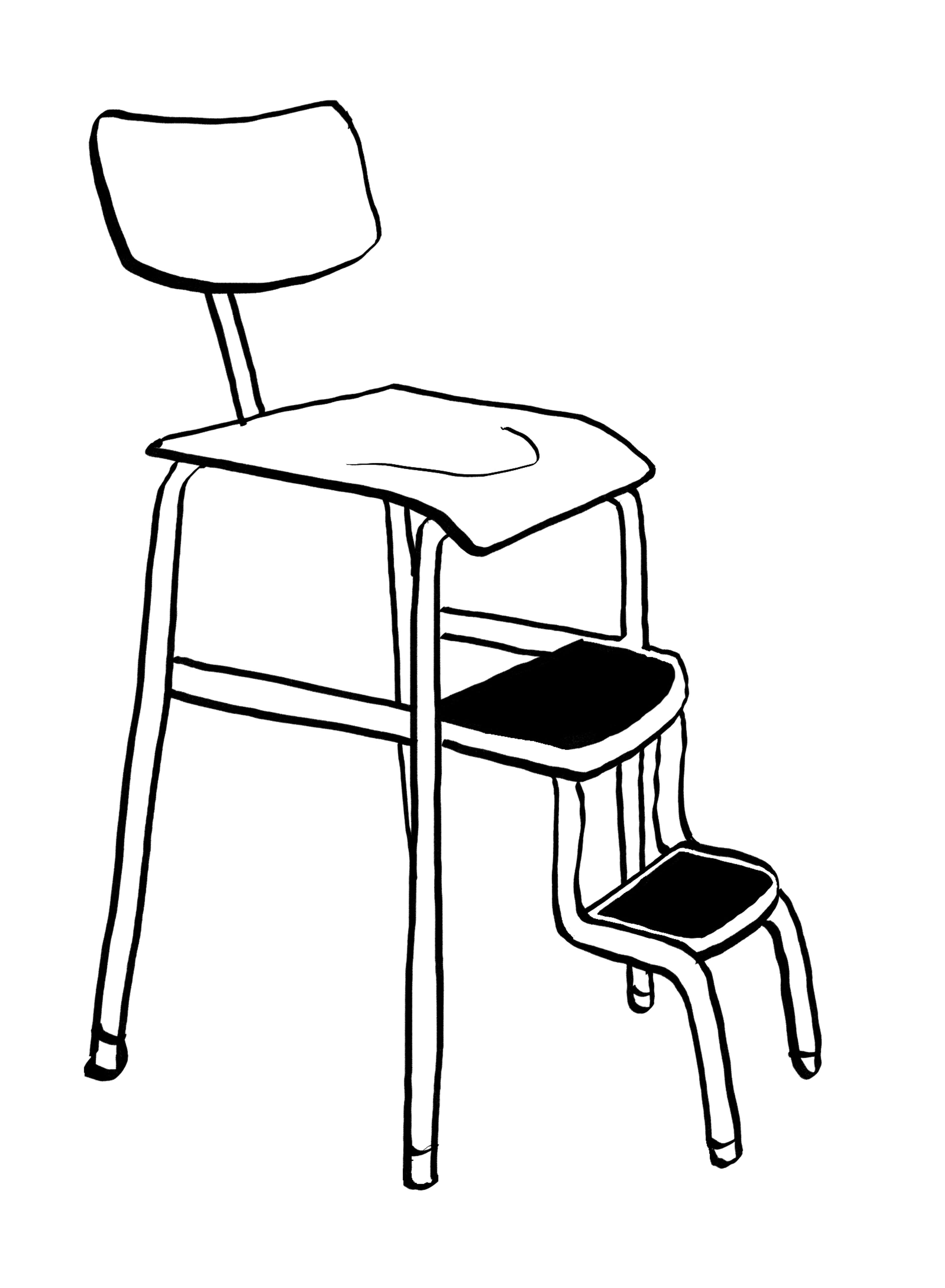
Jens: And my mother lived in the kitchen actually because it was so well designed and it was in the middle of the house as well. Like ours. Yeah. It was actually in the same spot. The same spot of the house. So everything worked there. There's a sort of an energy in that middle of the house.
So many years, so many people confessing, so many families, so many cries, so many laughters, so many whatever in that place.
Julie: Wow. Oh, that's amazing. I get goosebumps.
Jens: It works that way.
Julie: That is so good.
Jens: But later on, my parents moved to Nivågård just north of here. Yeah. And they brought the chair with them. Yeah, and the new kitchen in Nivå was actually sort of the same thing, was open, no walls, no nothing. It was one big kitchen actually with a table where you can eat as well, a very tall room.
Julie: Did your father also design that or no?
Jens: No, it was there, it was, but he designed the kitchen it is somehow the same way as before, and the chair was there. And it's still there in that kitchen.
Julie: And it still entices people to confess?
Jens: I don't know. My sister's living there now with her husband and I know that the chair’s there, but I'm not sure that everyone comes there and confesses things. I haven't talked to her about it. I maybe should. But this confession chair, and it's been mentioned in many, many speeches about my parents.
Julie: Amazing. Wow.
Jens: It’s the most important chair in the house.
Julie: In the most important room in the house.
Jens: Yeah. In the most important room in the house.
Julie: Yeah. And that's the stuff that memories are made of too. A lot of the people I've talked to, we've talked about memories that happened in the kitchen. And that's exactly what it is. Like big events and little events.
Jens: Like around the fireplaces in the old days.
Julie: Yeah. I think around the fire where stories are told…
Jens: Stories are told, music is played, songs are sung around the fireplace. Also, when you're a boy scout — I was a boy scout at some time — and also as a soldier, the place where we have a fire. You gather around it because it's warm. You can sit together and have conversations and so on. I think it has been that all the time. The fireplace is the place that you meet. And it's holy somehow.
Julie: With a confessional chair.
Jens : It's actually holy. That's funny to think of. I never thought about it this way, the kitchen really is. It is so.
Julie: And again, it's kind of magical
Jens: As always. We must never forget the magic part of life.
Julie: That sage advice from my old friend seems like the perfect place to stop. Thank you so much, Jens, for the conversation and Telma for your recording abilities.
We'll be back in the feed very soon with new episodes on Danish design. So hit subscribe wherever you listen to podcasts. This episode of The Sociable Kitchen® Podcast was produced by me, Julie Broberg and sound engineer Magnus Vad. Magnus also made the music for this episode. We put it together at Feedback Studio in the old meat pecking district near the harbor in Aarhus.
